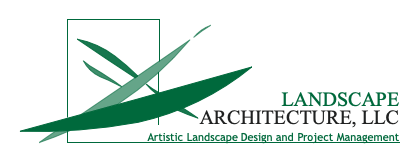Plant bed edging is one topic that I am often asked about. Many of my clients come to me seeking advice on how to really define their lawn and plants. There are several options that are available, and each has their advantages and disadvantages.
What is plant edging?
It essentially is a permanent material that separates the plant bed from the lawn. Most commonly, bed edging is seen as black vinyl or plastic. I have a lot of customers ask me: “Is this my only choice?” But before I answer that question, we need to answer why you would use bed edging.
Why should you edge your plant bed?
Plant bed edging helps reduce maintenance for your yard. It reduces the spread of grass into the plant beds. It also prevents erosion of bark, mulch and other materials into your grass. As a result, many of my customers opt to do some sort of edging mainly to prevent the need for maintenance.
Do you need to use a permanent edge between the lawn and the plant bed?
Frankly, I do not use a permanent bed edging in my yard. I trench with a spade to provide a nice clean edge. It does increase maintenance some but I believe it places the focus on the colors and textures of the plants in the garden. The landscape design is important when deciding on the right way to edge your plant bed. This article I wrote will help explain more about balancing your landscape planting design and what works best for your needs.
What are the options?
As I mentioned earlier, the black vinyl edging is the most frequent solution. It is the least expensive of the options and quick to install. When installed correctly black vinyl edging will stay in place for 10-20 years.
While it is an easy solution, there are some disadvantages.
It is easy to install incorrectly which will lead to frost heaving during the freeze-thaw cycles of spring.
It is easily clipped with a lawnmower or a string trimmer.
It can trap water behind it if there is minimal change in elevation or if it set too high.
Typical cost of black vinyl edging installed by a professional landscape contractor will be between $3.50 and $4.15 per linear foot.
Other options include:
Stone or Brick
Advantages
Less likely to heave in the winter.
Won’t be damaged by mower.
Can provide a nice, clean look without detracting from plants.
Can create a more forward look.
Easy to run mower tire on.
Disadvantages
More difficult to install.
Can cost $10-20 per liner foot.
Concrete Curbing
Advantages
Creates a strongly defined edge
Makes a visual statement
Disadvantages
The focus becomes the edging instead of the plants.
Cost over $30 per foot.
It can be difficult to decide what option is best for your lawn and plant beds. If you have any questions or need advice on these options, please leave a comment below.




